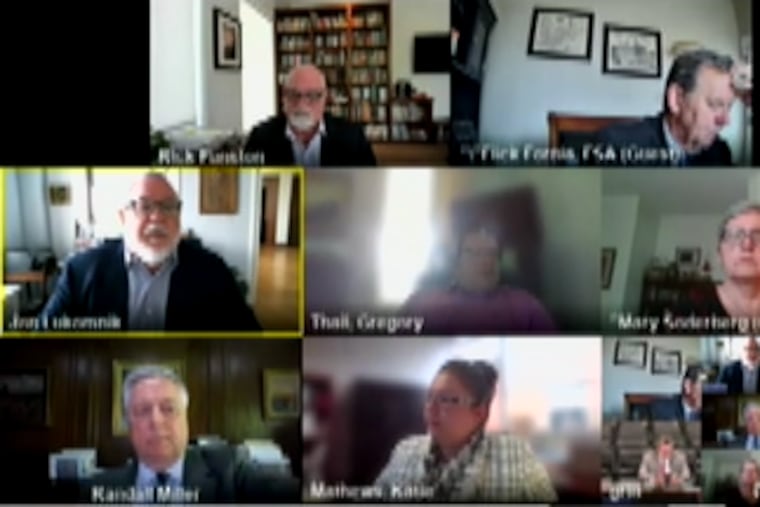School teachers face a hike in pension costs but state workers dodged one. Here’s why.
Pennsylvania public school staff have to pay extra to their pension fund due to poor investments. But state workers won't. A look at the differences between SERS and PSERS.

In July, about 100,000 Pennsylvania school staff will have to pay more from their paychecks into their pension fund after the plan’s leaders belatedly admitted it had missed its investment target.
This bad math has embarrassed the $64 billion plan known as PSERS. The board of the Public School Employees’ Retirement System initially claimed it had beaten its goal.
Meanwhile on Wednesday, the board of the $35 billion sister fund for state employees, SERS, said it had easily crested its target — and so state workers won’t face any increase in their pension costs.
But that doesn’t mean that the state employees’ fund is run by financial wizards and the teachers’ plan by dunces.
An Inquirer analysis suggests that the differing performance for the two funds comes down mostly to a quirk of their financial calendars. In fact, when their financial returns last year are measured over the same time frame, neither one looked great.
Consider: The funds returned just over 1% each in the year ended June 30. Though this period was buffeted by the pandemic, the S&P index of 500 big U.S. stocks rose 9% over that same period.
In 2010, lawmakers imposed a so-called shared risk rule that emerged out of obscurity this spring to boost teachers’ pension bills. The rule stipulates that when investment returns for either state plan fall below official targets, workers would have to join taxpayers in paying more into the funds.
The state SERS system, supporting 133,00 retirees, beat its target. From January 2011 through December 2019, a time frame that the “shared-risk” law sets out as a benchmark, that plan reported average annual returns of nearly 8% a year. The plan said that was above the target, though it was unclear Wednesday precisely what the target figure was.
But the teachers’ PSERS plan fell short. From July 2011 through June 2020, its review period, the teachers’ plan generated a profit of just 6.34%, according to revised numbers adopted by the rueful board.
This test period is a little different because PSERS uses a different fiscal year. And that made a big difference in the results.
PSERS had needed to hit at least 6.36% to avoid the “shared-risk” jump in deductions. In its first bungled announcement, the fund for teachers asserted it had cleared its hurdle, posting a return of 6.38%.
Since then, the board has hired a string of lawyers to investigate why its staff and consultants provided bad data — and even suggested there was an internal attempt to cover up the poor results.
But did SERS, the State Employees’ Retirement System, really do a better job?
The smaller fund has moved more quickly than its larger counterpart to cut investments in expensive hedge funds and private-equity vehicles that were touted as market-beaters in the 2000s but have mostly trailed more familiar stocks recently.
Still, The Inquirer’s review shows that the state workers’ plan actually booked slightly lower average annual profits than the school fund between 2011 and 2020 — when both are placed on the same July-to-June fiscal year.
While the plans’ returns often differed significantly for any one year, their multi-year return average ended up almost identical. Of the two, in fact, the school system’s plan has a very slightly higher average return.
All of which suggests that if they had been judged on the same time frame, SERS may have had to boost employee deductions. Its officials were unavailable for comment Wednesday as trustees held their bimonthly board meeting.
Officials at both plans said COVID, unsurprisingly, played a role in how performances played out.
The timing of the pandemic boosted SERS’ results, and depressed those of PSERS.
“Sometimes, timing is everything,” Tom Derr, a spokesman for SERS, said earlier this month.
Staff writer Craig R. McCoy contributed to this article.